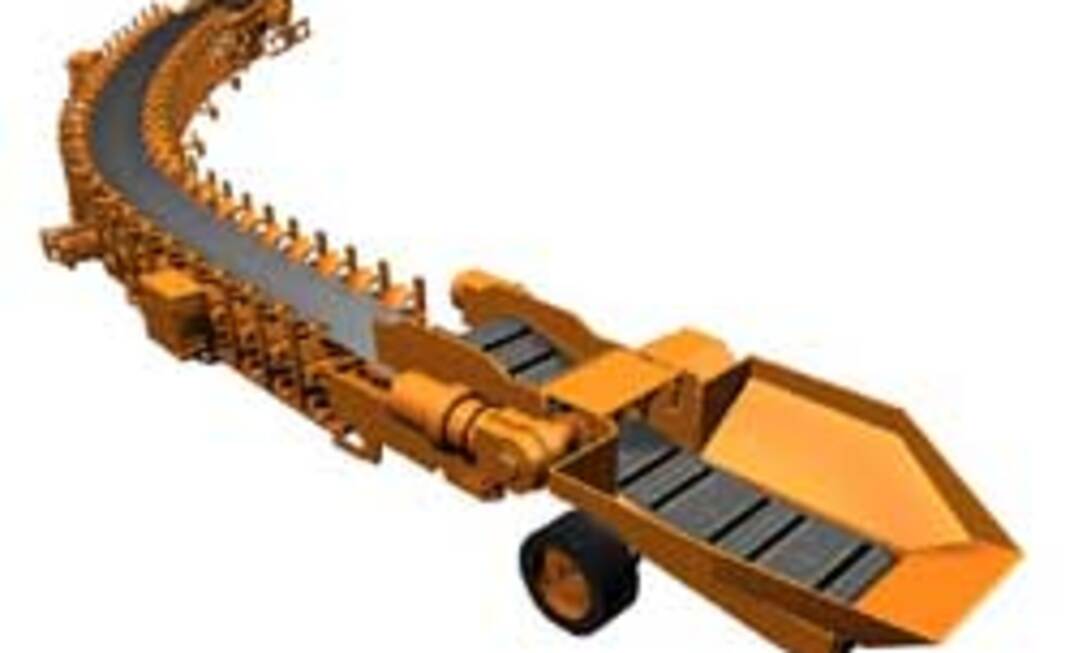Research undertaken by the Australian Coal Association Research Program (ACARP) has identified a number of constraints, particularly installation of roof and rib support.
Other limiting factors include the cyclic, stop-start nature of shuttle cars haulers particularly once haulage distances increase beyond 70m to 120m.
Modelling of roadway development systems undertaken by Voest Alpine Mining and Tunnelling (VAMT) on a mine by mine basis has identified that the development process becomes haulage constrained at some 70m from the boot end, and that while limited gains may be made by introducing continuous haulage systems, significant gains could be realised through improved bolting rates with self drilling bolts.
VAMT has one of five projects developing self-drilling bolts to overcome this problem.
The ACARP report noted Joy 12CM operators typically balance the cutting/bolting/coal clearance elements of the process by cutting out for a half cycle and completing half of the bolting and support cycle during the shuttle car wait period, then completing the cutting cycle and the second half support cycle after the second shuttle car is loaded.
Advancement of the conveyor and panel services was a significant constraint, particularly in mines employing dual continuous miners to advance two entry gateroads.
In one instance, the development of fully integrated monorail mounted services management system has enabled a mine to significantly reduce the duration of panel moves, as has the use of a mobile boot end (fitted with conveyor stand insertion device and DCB) in another instance.
Another group of mines install a temporary development conveyor (nominally 1200mm floor mounted) to expedite the development process, and subsequently recover the conveyor before installing the longwall conveyor.
Installing and advancing ventilation duct is a problem at mines that have not adopted integrated monorail services management systems.
While some mines used and integrated monorail services management system, which incorporates the ventilation ducting, in the vast majority of cases mines are still required to manually install ducting as roadways advance. The research found while a number of mines expressed interest in adopting a forcing ventilation system utilising flexible ducting, the current design of continuous miners was thought not compatible with the fitting of dust scrubbers and multiple bolting rigs.
According to the report many technology developments are currently underway which should address several key process constraints in the short to medium term.
Technology developments
VAMT is about to release an upgraded ABM25(S), designed for difficult mining conditions and 4.8m wide roadways, and will incorporate Hydramatic’s automated bolting system. Sandvik is also expected to be releasing a roof mounted continuous haulage system after trials of the first underground system are completed at a mine in the USA in early 2006.
The ACARP report said Joy Mining Machinery is mooted to be developing a new generation continuous miner for the global roadway development market, however, the nature, capability and timing of the new continuous miner is being kept closely guarded.
Joy is also working on continuous haulage options and has two floor-mounted 4FCT systems in operation in US mines with two other systems reported to be under manufacture for US mines.
DBT recently established a global roadway development group to develop strategies to improve and extend its range of equipment in the roadway development market sector.
According to the report designs to use conventional TBM tunnelling technology in underground coal mines have been completed by Japanese company Ishikawajima-Harima Heavy Industries (IHI) and Pacific Tunnelling, an Australian based tunnelling company.
The IHI Mogura is designed for a 3.5m high by 6m wide roadway, and would utilise the automated, self drilling bolt technology developed for the CSIOR-developed ACBM. The roadway profile is well suited to longwall mining.
Pacific Tunnelling’s Lovat TBM is a single tube design for a 4.5m diameter circular roadway, and has been designed to allow limited bolting of the top half of the roadway profile immediately behind the cutter head in difficult ground conditions, in addition to bolts being installed off the normal bolting station.
Floor cutters mounted at the machines rear square off the floor while special gateroad support canopies have been designed to operate within the circular topped roadway profile. The machine is modularised to enable re-establishment elsewhere in the mine within two weeks of completion.
Both machines are designed to achieve rapid advance rates and will require a substantial commitment in associated infrastructure to sustain such development rates.
Finally, Eikon, an Australian based technology developer, has completed the design of a 250m3/hour coal pumping system that could provide a continuous coal clearance system between the continuous miner and boot end, or even obviate the need to install and extend a development conveyor. The project has received Federal Government funding on a $1/$1 basis to build a prototype, however, the project is currently stalled pending further industry support.
























